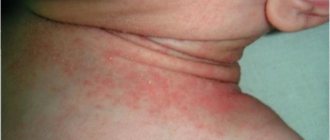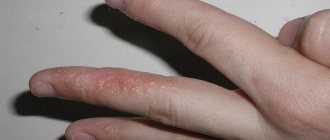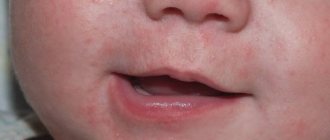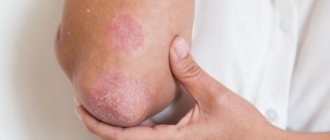From this article you will learn why pimples appear on the roof of your mouth and how to treat them.
Various swellings and bumps in the mouth can appear in any place - on the cheeks, gums, under the tongue. Depending on the cause, symptoms may vary. In most cases, the tumors are not harmful and do not require special treatment.
Pimples can vary in size - be small or large, hurt a little or not show up at all. They also differ in color. Let's find out what is the reason for the appearance of these tumors, as well as how you can get rid of them.
Red, transparent, white pimples appeared on the palate of an adult: reasons
As a rule, when pimples appear on the roof of the mouth, a person immediately begins to panic. And in fact, this is how various diseases of internal organs can manifest themselves. Let's find out what caused this reaction.
- Dental diseases
The very first and most common reason is dental problems. This could be a simple neglect of hygiene rules, injuries, improper installation of prostheses, and so on.
For example, when the root of a tooth becomes inflamed, small pimples appear. They can be white or yellowish. Such rashes are called stomatitis or inflammatory lesions.
- Infections
Infection in the mouth
Infections also often cause rashes in the mouth. In adults, measles or chickenpox usually manifest this way. As a rule, children become infected with this disease, but it is possible that adults will also become ill. If you really have an infection, your temperature will certainly rise and your general condition will worsen.
- Herpetic infection
With this disease, transparent pimples with liquid appear. The disease can worsen if the immune system is weak. As a rule, no special treatment is required for such manifestations, but it is advisable to ensure that the rash is not damaged. Otherwise, the infection will spread.
- Glossitis
Red bloody pimples appear due to poor diet, drinking alcohol in large quantities and allergies. Usually, pimples hurt when touched. It is advisable to start treatment as quickly as possible, otherwise a crust will appear on the surface.
- Syphilis
This disease can also manifest itself in this way. As a rule, pimples are white and do not cause any discomfort. The rash varies and does not necessarily appear on the roof of the mouth.
Change in structure with fluid accumulation
With such lesions, the structure of the mucous tissue changes so that a cavity filled with liquid is formed inside.
Bubbles and bubbles. They are formed in the epithelial layer or under it, filled with serous or hemorrhagic contents, and can be grouped. The cavity is closed by a thin layer of epithelium, which can break through. Bubbles can group and break quickly. Bubbles form and last longer. Both types of lesions provoke the formation of healing ulcers on the surface of the mucous membranes. They arise due to damage by viruses, traumatic injuries, and disturbances in tissue nutrition.
Ulcers. They can form from blisters or on unchanged mucosa. The cavity is filled with purulent exudate (whitish, yellowish, greenish contents with a pungent odor). They can be deep or superficial, often painful. Indicate an inflammatory process, appear after traumatic damage to the mucous membrane, due to infectious, viral diseases.
Cysts. A formation with dense walls that form a cavity. It is filled with transparent contents (can become purulent, serous, bloody). Appear due to blockage of gland ducts on the mucous membranes or as a symptom of periodontal diseases.
White pimples on baby's palate: reasons
There are quite a few reasons why pimples appear on the roof of the mouth in babies. Let's look at each of them in more detail.
- Tongue injuries
All babies, when they turn three months old, begin to actively explore the world. They try to taste everything. But not every object that ends up in the mouth is sterile.
Older children develop the habit of chewing on everything, and some objects may well scratch or injure their tongue.
So, even with a small scratch, the mucous membranes can become inflamed and pimples appear on the palate. Most often they appear on the tip of the tongue.
- Candidiasis and thrush
Thrush
In babies under one year of age, the immune system is still developing, and therefore it does not have the ability to resist most bacteria. So, any disease inevitably reduces immunity, which is already weak.
This can cause thrush. The reason is that the Candida fungus begins to actively multiply. It can also occur after taking antibiotics.
By the way, thrush, along with pimples, also causes plaque in the mouth. It is dense and white. It spreads throughout the mouth. If you remove the plaque, the skin underneath will be red and ulcers may even appear. The latter, as a rule, appear when the disease is already quite advanced.
- Stomatitis
With this disease, many pimples appear in the throat area. They cause pain and also interfere with normal eating and swallowing. They often burst because food irritates them. With a complex form, the child may have a fever and feel weak.
- Allergy
Children under two years of age are most often susceptible to allergies. One of its symptoms is small pimples on the palate. These rashes are mainly cause for concern because they are itchy and painful when swallowing and eating. The body temperature does not increase.
- Angina
We all know that this disease is infectious. It affects the tonsils. They become inflamed and painful. In addition, the infection can spread to the palate, manifesting itself as pimples. They are white and can hurt, and a white coating appears on the tongue.
If the pus is removed, redness immediately becomes visible, and the mucous membrane swells. The formations hurt a little, interfere with swallowing normally and greatly affect the child’s well-being. He becomes capricious, loses his appetite, and has a high fever.
- Herpetic infection
Herpes infection
When infected with the herpes virus, exacerbations periodically occur. They manifest themselves as the appearance of various pimples on the tongue and palate. They can even appear on teeth. When they open, an ulcer appears. It causes discomfort, but with proper treatment it goes away quickly.
- Dysbacteriosis and unbalanced nutrition
When a child does not eat properly, it sooner or later spoils the microflora of his intestines. As a result, glossitis often develops. The mucous membrane of the tongue becomes inflamed. The papillae of the tongue are divided and resemble white pimples in appearance. The disease can also affect the mucous membrane of the palate. They generally do not bother the baby, although they may be sensitive to hot or cold foods.
Causes of development of inflammatory diseases
The human oral cavity is inhabited by many beneficial, opportunistic and pathogenic microorganisms, the totality of which is called microflora [2]. Aerobic and anaerobic bacteria, various types of fungi, viruses, and protozoa were found in it [3]. If a person is healthy, the composition of the microflora is balanced, due to which the health of the entire oral cavity is maintained. However, under the influence of various unfavorable factors, general and local immunity can decrease, and the balance of microflora can be disrupted due to the excessive development of certain pathogenic microorganisms
Often these reasons act in a complex manner - against the background of a chronic or acute disease, the patient’s immune defense decreases, which leads to intensive reproduction of a certain strain of microorganisms, its predominance in the intraoral flora and the start of the inflammatory process. For example, candidal stomatitis is caused by fungi of the genus Candida. The causative agent of herpetic stomatitis is the herpes simplex virus.
Risk factors for oral inflammation [1]:
- systemic diseases (diabetes, chronic diseases of the gastrointestinal tract, endocrine and other disorders);
- weakened immunity (for example, due to HIV, unfavorable environmental conditions, hypo- and avitaminosis, poor nutrition);
- past infectious diseases, especially in children (ARVI, influenza, chicken pox) [4];
- long-term use of potent medications, in particular antibiotics;
- unsuccessful prosthetics;
- prolonged stress;
- lack or insufficient oral hygiene ;
- bad habits (smoking), etc.
Thus, it is believed that one of the key reasons for the development of aphthous stomatitis is chronic diseases of the gastrointestinal tract. Oral candidiasis can develop due to long-term use of antibiotics, and leukoplakia can develop in response to constant irritation of the mucous membranes of the lips and oral cavity, for example, with a poorly fitted denture [1].
How to treat white pimples on the palate of a child: methods
Regardless of what caused acne to appear on the palate of a child’s mouth, treatment has some general rules:
- First of all, take constant care of your oral cavity. After eating, always treat the affected areas with an antiseptic, also do not forget to do this in the morning and evening
- Eliminate for a while any food that irritates the palate - spicy, hot and sour.
- Food should be as soft as possible, because hard food can also cause inflammation.
- It is strictly forbidden to squeeze or cover pimples. This will only make it worse
- Drink plenty of fluids to help flush toxins and allergens out of your body
The child has some pimples on the palate - what are they?
Pimples in the mouth
Pimples appear on the roof of the mouth in older children as well. This can be caused by several reasons:
- Measles
The rash in this case appears as white pimples. The rashes disappear on their own after a few days and do not require special treatment. But it is important to eliminate the main cause as quickly as possible in order to eliminate dangerous consequences.
- Chickenpox
With such a disease, pimples do not always appear on the mucous membranes, but they may well occur.
- Thrush
Pimples, as we said above, appear along with a white coating. Sometimes it bleeds. The disease itself is not dangerous, but it can interfere with normal food intake.
- Dysbacteriosis
It often occurs at an early age and causes bloody pimples to appear in the mouth. It is associated with intestinal dysfunction.
Small transparent, painless pimples on the palate - how to treat them?
Those who have pimples on the roof of their mouth or around them begin to wonder which doctor to see. First of all, you should be examined by a general practitioner and a dermatologist. They will prescribe tests and consultations, based on the results of which they will refer you to the right specialist.
Acne treatment is usually prescribed as follows:
Pimples on the palate
- If your rash is due to allergies, your doctor will prescribe antihistamines.
- If pimples appear on the lower cavity of the mucous membrane, then treatment will be determined depending on the pathogen. Accordingly, treatment can be prescribed antiviral, antibacterial or antimycotic. The duration of administration and dosage are determined by the doctor individually for each person.
- If a high temperature appears, then drugs are used to reduce it, for example, Nurofen. If severe pain is observed, then antispasmodics or anti-inflammatory drugs are used.
- Traditional medicine can also offer a method of treatment. So, you can rinse your mouth with decoctions of herbs, such as chamomile or St. John's wort. They eliminate inflammation and pain. They are not used separately, but only together with general treatment.
- Experts advise treating your mouth with antiseptics, for example, Chlorhexidine. External ointments and gels help well.
- Rinsing with baking soda and salt can quickly relieve unpleasant symptoms. They help relieve swelling, redness and inflammation.
Diagnostic methods
Rashes may indicate the presence of a pathology such as ordinary stomatitis or candidiasis. However, often such a symptom indicates dangerous diseases occurring in the human body. It is for this reason that when a rash appears on the palate, it is imperative to undergo a thorough diagnosis and not self-medicate.
The patient examination includes the following activities:
- General examination of the areas of the rash and examination of the medical history. In addition, the presence of any additional symptoms must be clarified.
- Laboratory research. Based on the results of a general blood test, you can find out the cause of the rash and make an accurate diagnosis. An increase in the number of leukocytes or erythrocyte sedimentation rate indicates an inflammatory process or an infectious disease. Against the background of an allergic reaction, an increase in the number of eosinophils is noted.
- Analysis of images of the contents of the rashes themselves. In fungal pathology, micelles of pathogenic fungi can be seen when examined under a microscope. Signs of cancer are the presence of atypical cells in the samples.
Based on the results of the studies, the doctor may prescribe additional tests for HIV infection or syphilis, as well as a thorough dermatological examination.
We recommend watching the video:
Prevention of acne on the roof of the mouth: features
To prevent acne on the roof of your mouth from bothering you, it is important to carry out prevention! First of all, keep your mouth clean - always clean your teeth, avoid infection, avoid hot water, and so on.
It is equally important to monitor your diet and take vitamins. If the first symptoms appear, go to the doctor as soon as possible so that he can determine the causes of the appearance.
Visit your dentist regularly for check-ups and get your teeth treated if necessary.
The appearance of pimples in the mouth is always very unpleasant and indicates serious illness. The exact cause can only be assessed after a complete examination.
How to get rid of stomatitis and other inflammatory diseases of the oral cavity
Treatment of stomatitis and other inflammatory diseases is usually comprehensive, aimed at alleviating the patient’s condition, eliminating the root cause and risk factors.
Often, inflammation of the oral cavity is painful, accompanied by itching, irritation, and swelling of the mucous membrane. Because of this, patients have difficulty eating. To alleviate the condition, the affected areas are treated with various anesthetic and antiseptic rinses, powders, and solutions. This also prevents possible complications of diseases, for example, the transition of aphthae or foci of inflammation into ulcers, which require more time to heal.
Another important area of treatment is the elimination of local causes of inflammation of the oral mucosa. These include local foci of infection, for example, caries , dental plaque (tartar), traumatic chipped teeth, protruding parts of fillings or dentures [1]. For this purpose, appropriate treatment and professional hygiene are carried out.
And finally, a significant part of therapy is devoted to the diagnosis and elimination of a general disease that can provoke inflammation of the oral cavity (for example, endocrine disorders or chronic diseases of the gastrointestinal tract) [1]. In special cases, antiviral drugs [5], antimycotics [6] and antibiotics [1] are used.
Prevention of stomatitis and other inflammatory diseases includes [7]:
- treatment of major systemic diseases;
- strengthening general immunity: adherence to the principles of a healthy lifestyle, nutrition, giving up bad habits, eliminating hypo- and avitaminosis;
- strengthening local immunity: regular careful hygiene, avoiding injury and irritation of the mucous membrane in the mouth.
Regular individual and professional oral hygiene is a key way to prevent intraoral inflammation. It must include:
- brushing your teeth twice a day, after breakfast and before bed, with a soft-bristled brush and toothpaste;
- the right choice of toothpaste: if you are prone to inflammation of the mouth and gums, as prescribed by a specialist, you should give preference to pastes with anti-inflammatory and antiseptic properties;
- use of antibacterial rinses with anti-inflammatory effects;
- cleaning interdental spaces with dental floss or tape;
- regular visits to the dentist (once every 6 months) for a preventive examination and professional removal of dental plaque.
A small pimple on the palate is very common: forum
It happens that people, when pimples appear on the roof of their mouth, begin to look for an answer to the question - where did they come from - on forums. Here's what other netizens say about this disease:
Review 1
Review 2
Review 3










